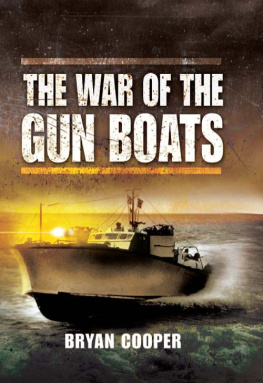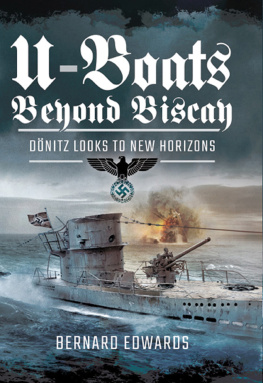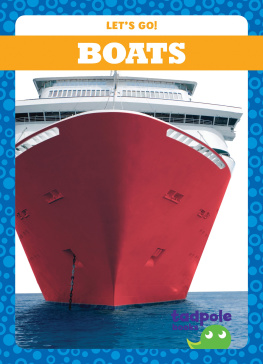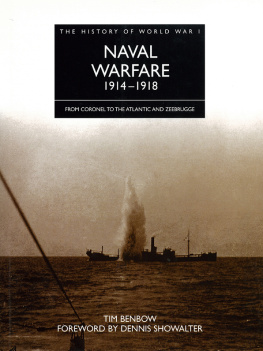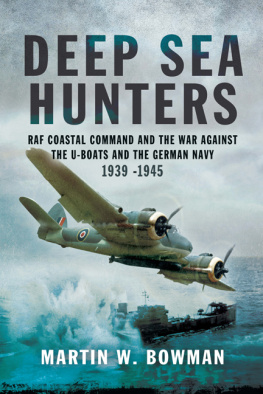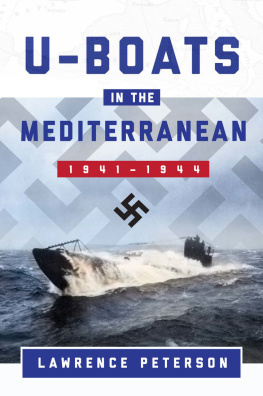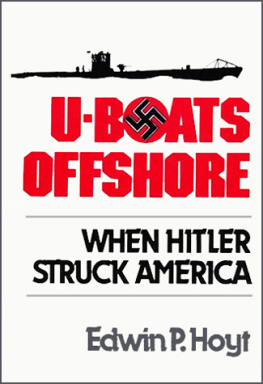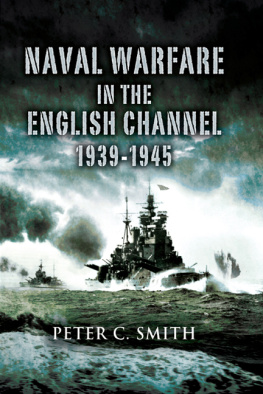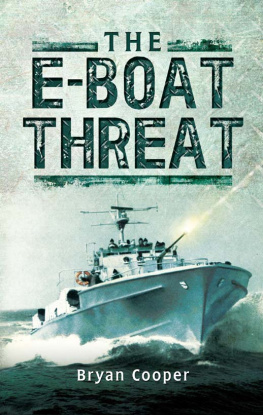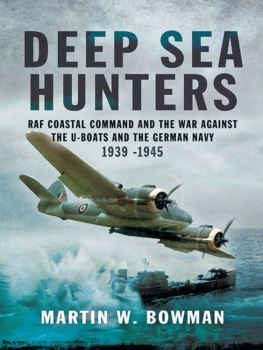
By the same author
The Ironclads of Cambrai
North Sea Oil The Great Gamble
The Buccaneers
PT Boats
Alaska The Last Frontier
Tank Battles of World War One
A History of Fighter Aircraft
A History of Bomber Aircraft
The E-Boat Threat
The Adventure of North Sea Oil
Novels
Stones of Evil
The Wildcatters

First published in 1970 in Great Britain by
Macdonald & Co. (Publishers) Ltd,
and in the United States by Stein and Day
This edition published in Great Britain in 2009 by
Pen and Sword Military
an imprint of
Pen and Sword Books Ltd
47 Church Street, Barnsley
South Yorkshire S70 2AS
Copyright Bryan Cooper 1970
SBN 35602941 7
ISBN 978 1 84884 018 8
Digital Edition ISBN: 978 1 84468 131 0
The right of Bryan Cooper to be identified as Author of this Work has been asserted by him in accordance with the Copyright, Designs and Patents Act 1988.
A CIP catalogue record for this book is available from the British Library
All rights reserved. No part of this book may be reproduced or transmitted in any form or by any means, electronic or mechanical including photocopying, recording or by any information storage and retrieval system, without permission from the Publisher in writing.
Typeset in 10pt Palatino by
Mac Style, Beverley, East Yorkshire
Printed and bound in the UK by
MPG Books Group
Pen and Sword Books Ltd incorporates the Imprints of Pen and Sword Aviation, Pen and Sword Maritime, Pen and Sword Military, Wharncliffe Local History, Pen and Sword Select, Pen and Sword Military Classics and Leo Cooper.
For a complete list of Pen and Sword titles please contact
PEN and SWORD BOOKS LIMITED
47 Church Street, Barnsley, South Yorkshire, S70 2AS, England
E-mail:
Website: www.pen-and-sword.co.uk
Contents
Acknowledgements
T he author would like to thank the Imperial War Museum, the Department of the US Navy, Vosper-Thornycroft (UK) Ltd., and WWII PT Boats Museum and Archives in Germantown, Tennessee, USA, for the photographs used in this book; also John Batchelor for his drawings, and Carol Stuart and Laurence Genin for their computer expertise.
Introduction
T he closest-fought sea battles of the Second World War were those of the little ships, the highly manoeuvrable motor torpedo boats and gunboats of all the major navies.
Small enough to move unseen over moonlit waters, penetrating minefields and harbour defences to take the war close to an enemys coast, and fast enough to fire their torpedoes and speed away again before the enemy's guns could be brought to bear on them, they were deadly weapons in coastal waters. Too small and numerous to be given the dignity of individual names, they were known by numbers instead to the British as MTBs and MGBs; to the Americans as PT boats; to the Germans as S-boats; and to the Italians as MAS boats. They fought in every major theatre of war, in the English Channel and the North Sea, among the dreamy islands of the Aegean, off Burma and Malaya and in the South China Sea, and across the Pacific islands to the final liberation of the Philippines.
Night was the time of their hunting. By day, because weight of armament had to be sacrificed for speed, they were vulnerable to attack by aircraft and other surface warships. But at night they could rely on surprise as their main advantage.
At rest in the water, the boats were squat and beamy. But at speed they were things of beauty, planing over the water at 40 knots and more, with bows lifted, slicing great waves from either side of their hulls and leaving wakes foaming far behind them. The men who rode these night hunters might curse the pounding they got, but they knew an exhilaration of speed that no other kind of ship could give. Their battles, when similar craft of opposing sides met, were fought hand to hand at closer quarters than any other kind of warship.
But paradoxically, speed was not a main requirement in the ideal torpedo attack, which was made by lying in wait with engines cut in the path of a convoy, then idling unseen and silently towards a target, launching torpedoes and slipping away before the enemy knew what hit them. This was not always possible, of course, and once sighted, speed was often the only means of escape. Rapid manoeuvrability, a low silhouette which made them a difficult target and the use of smokescreens, were their primary means of protection. Guns were mounted, but they could only be really effective against craft of their own size, as with the motor gunboats which the Royal Navy developed for the specific purpose of combating German motor torpedo boats.
The main purpose of the little ships was to attack enemy shipping, but they were used in many other ways. Apart from protecting their own convoys, they took part in combined operations raids, transporting troops and supplies, and giving covering fire during beach landings. They raided harbours, dropped secret agents on lonely shores, captured and boarded merchant ships in a manner reminiscent of the buccaneers of old. Their only limitation was range, because of the high fuel consumption of their powerful engines, and their inability to take much punishment in heavy seas.
There were three main areas of conflict in which motor torpedo boats took part, and in broad terms their operations reached a peak at three distinct stages of the war. First, there was the fight for the seas off the east and south coasts of Britain which, with Germanys occupation of France and the whole coastline of Western Europe, became as grim and desperate as the air battle taking place in the skies overhead. This was their greatest arena of operations. Not only were motor torpedo boats of both Britain and Germany used for attacking each other's merchant convoys by mine and torpedo, but there was a direct confrontation between them as they strove to defend as well as attack. Included in the Coastal Forces of Britain were crews and boats from the Dominion and European allies and, at a later date, from America. It was not until the end of 1942 that Britain began to reach equal terms with the German Schnellboot, perhaps the most successful of all motor torpedo boats, which were generally called E-boats by the Allied forces, standing for Enemy War Motorboat. The fight grew in intensity in 1943, and again in 1944 with the Normandy landings; it lasted until the very end of the war when the German boats, although by then outnumbered and outclassed, were still harrying Allied shipping.
The second area of conflict was in the Mediterranean, where sea fighting followed the progress of the land battle as it extended from North Africa to Sicily, Italy and the Balkans, and built up to a climax with Italys surrender. Here also the motor torpedo boats attacked as well as defended convoys as both sides fought to keep open lines of supply to their land forces. Malta figured prominently in this struggle, both as a base for MTBs and as a target for attack by German and Italian boats. But the whole canvas of operations in the Mediterranean was on a larger scale and gave greater scope for the kind of lone role that suited the individual temperament of those who served in small boats. Either singly or in units, craft would set out from their bases for days at a time to attack enemy convoys, take part in commando raids, and cooperate with partisans behind enemy lines, hiding by day amongst the many islands in the region, or sheltering in quiet bays and inlets. As in home waters, British Coastal Forces included Dominion and American crews and boats. For a while, an American PT (patrol torpedo boat) squadron was the sole representative of the US Navy in these waters. The war in the Mediterranean was significant for the large number of Italian MAS boats operating in the early stages, Italy having given more attention to the military application of such craft before the war than the other powers, which tended to concentrate on big ships to the neglect of smaller ones.

